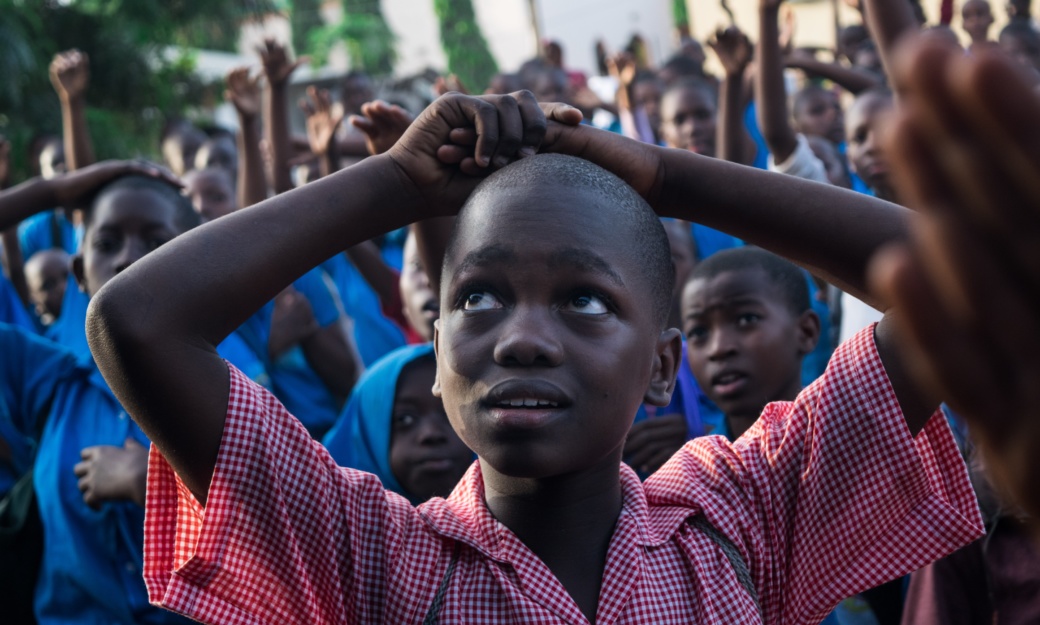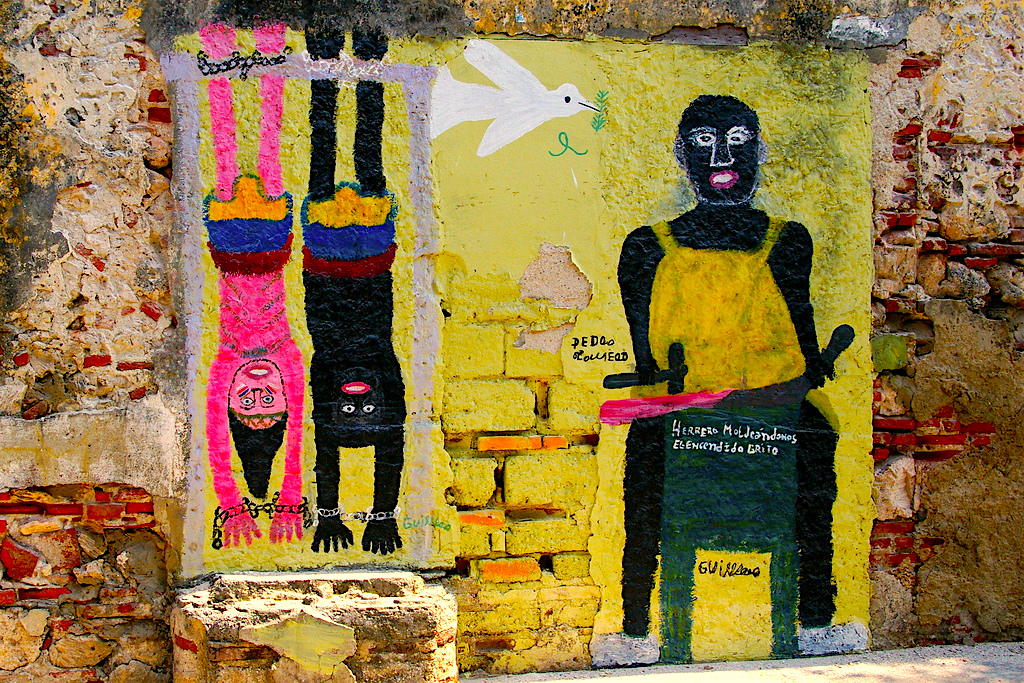Uganda Attempts to Shut Down Controversial Silicon Valley-Funded Schools

Those who recall Mark Zuckerberg’s controversial $100 million philanthropic experiment to transform Newark public schools might be surprised to learn that Zuckerberg, the Gates Foundation, eBay founder Pierre Omidyar and other Silicon Valley visionaries have been quietly investing in another educational experiment an ocean away.
Bridge International Academies was conceived in 2007 to be the McDonald's of global education, promising to better educate poor students for as little as $6 to $7 a month. The model presents an alternative to parents in East Africa, where Bridge first launched, many of whom pay hundreds of dollars per year to educate their children at traditional private schools. But critics of Bridge argue that even $7 a month is more than some families can afford.
Using tablets and standardized curriculums in each country, Bridge operates more than 520 schools, teaching some 100,000 students in Uganda, Kenya, Liberia, Nigeria and India. It’s currently expanding in Asia with dreams of reaching an ambitious 10 million students across the world by 2025.
Bridge claims its Kenyan students performed better than average on national exams for the third consecutive year—10 percent better in 2017, according to the company. It has also made headway toward solving a major problem in African education: chronic teacher absenteeism, sometimes the result of late or poor pay. A January report by the World Bank indicated the average teacher absenteeism in Ugandan schools is 57 percent, and 48 percent in Kenya. Meanwhile, Bridge teachers show up at a rate approaching 100 percent.
But in November 2016, Bridge encountered a setback when a Ugandan court ordered 63 of its schools to shut down. Most lacked government accreditation, and many Bridge teachers turned out to be unlicensed. Uganda’s high court allowed the schools to remain open pending an appeal, but Bridge dropped its appeal, preferring to negotiate with legislators directly. As classes resumed this month, Uganda’s Permanent Secretary for the Ministry of Education and Sports, Alex Kakooza, reiterated that "the Ministry has not yet licensed the Bridge Schools because they have not yet met the requirements to merit being licensed to operate in Uganda." He warned parents that none of the 1,300 "unlicensed school(s) will be allowed to operate" this school year, including the 63 Bridge schools.
Bridge claims it has long since submitted all the paperwork Uganda’s government requires to issue a license for its schools, and Kakooza once said that as long as schools had started the process, “nobody’s going to close you.” Bridge pointed out that, before the school year began, it made adjustments “in deference to the Ministry of Education requirements” such as changing the names of its Uganda schools by dropping the words “international” and “academy,” so as not to give parents any misleading impressions.
Just weeks before the issue reignited this month, Bridge announced that 100 percent of its Ugandan students who took the national exams required to place into secondary schools last year had passed, with 93 percent of its students getting top marks, compared with 56 percent nationally.
Uganda isn’t the only place where Bridge is facing resistance. Last February, a county across the border in Kenya ordered 10 of Bridge’s 12 schools there to be shut down for failing to meet education standards. (The Governor of Busia County later came out in support of the schools, and a Bridge representative said the schools remain open).
In August 2016, the Director General of Kenya’s Ministry of Education, Leah Rotich, wrote a letter to Bridge CEO and cofounder Jay Kimmelman saying that an inquiry by the Kenya Institute Of Curriculum Development had determined that “most of the content taught is not relevant to the Kenyan Curriculum,” among other problems. She gave Bridge 90 days to implement reforms to ensure its methods and curriculums were meeting national standards.
Some African parents may be uneasy about the idea of a western-conceived company disrupting something they hold so dear: control over their children’s education. Bridge threatens to globalize—or perhaps, to westernize—the sector on which many Africans bank their families’ futures.
That’s a frightening proposition in a continent where just 60 odd years ago people were living under colonial rule, their education, to the extent they received it, imposed upon them by foreigners. A foreign-conceived, one-size-fits-all education model is bound to remind people of that legacy. One senior official from the Ugandan Ministry of Education Sports told the advocacy and research group Education International that Bridge’s “robot-style of teaching is likely to cause problems for a learner not acculturated according to the robot.”
Last year in Kenya I spoke with a 30-year-old teacher in the Nairobi slum of Mathare named Dominic Maundu. Mathare is where Bridge set up its very first school, in 2009. A science teacher for Bridge from 2014 to 2016, Maundu recounted how during one term his first grade students were struggling to learn the different parts of plants, and about photosynthesis—a concept he says normally isn’t introduced until grade five. The first barrier was the pronunciation of the word itself. “It’s a compound word. It was much too complex,” Maundu told me. “It made them feel … discouraged. It makes them feel like they will not learn.”
Maundu’s Nook came with a pre-loaded lesson plan and no room for variation. “You have to teach exactly what’s in the script. With the Bridge way, you are lecturing or explaining,” says Maundu. “But as a teacher I wanted students to see flowers, to learn to collect them—for them to be real.”
Bridge operates less like a traditional school and more like a corporate office, with “Academy Managers” cued in to teachers' tablets to monitor their progress. Bridge claims to "have re-engineered the entire lifecycle of basic education, leveraging data, technology, and scale.” When the managers from Bridge HQ were away, Maundu sent his students out to collect flowers from a nearby riverbed and bring them back to examine in the classroom.
Bridge’s curriculum leaves no room for spontaneous acts such as Maundu’s. Bridge is funded by the world’s leading innovators, but its attempt to transform global education requires stifling some of the same ingenuity we’ve come to expect from our teachers.
Bridge’s Vice President for Public Relations, Joanna Hindley, pointed out that Bridge is by no means the only company to use so-called “scripted education.” USAID, too, advocates for scripted reading lessons in Kenya. She said Bridge’s lessons are designed to adhere to the Kenyan national curriculum (although not all of them have yet been officially endorsed). “What is different for Bridge classrooms is the way that lesson is structured in order to get the most out of the pupils and the teachers.”
Bwesigye Bwa Mwesigire, a Ugandan scholar and activist who is writing a book on neoliberal education in Africa, says the fact that developing world education is flawed doesn’t mean leaders ought “to support anything that looks like an alternative.” Mwesigire once tweeted: “Imagine a Ugandan couple setting up schools in the US, Finland, England and Holland for profit and flouting national rules! That is Bridge!”
Mwesigire takes issues with Bridge’s for-profit model. “Bridge speaks 'development' while really aiming at profit maximization, and further compromising the ability of Third-World states to manage their own affairs, including regulating education business,” he told me. Reports released by Education International argue that Bridge Schools come with so many hidden expenses that the ultimate cost to parents is often twice the sticker price. Hindley counters that “most public schools are in fact not free. Most parents are paying for teacher ‘motivation fees,’ uniforms, lunches, textbooks. There are a lot of hidden costs.”
Bridge isn’t the only western corporation overhauling the global education industry. Pearson PLC, the London-based education investor, has revenues of more than $5.5 billion per year, and is currently investing tens of millions of dollars in for-profit education franchises from Africa to the Philippines and beyond.
It’s a big business indeed. In addition to the founders of eBay, Microsoft and Facebook, Bridge has received investments from the World Bank’s International Finance Corporation and the UK. Even the U.S. government’s Overseas Private Investment Corporation has bought-in to the tune of a $10-million loan.
“This notion that Bridge is profiteering off the backs of marginalized communities is not correct. Bridge has never made a profit,” says Hindley. Indeed, the Financial Times reported that Bridge lost $1 million per month on its operations last year. Hindley asserts that Bridge was conceived as a long-term investment, and it is expected that it will break even and begin turning a profit once Bridge is serving 500,000 students, up from its current 100,000.
The company’s most ambitious experiment yet is now underway in Liberia. Last year the country’s government invited Bridge and other providers to operate 93 existing public schools to see if they could improve students’ performance. In September, the Center for Global Development and Innovations for Poverty Action released initial results from a randomized control trial. It found that “after one year, public schools managed by private providers in Liberia raised student learning by 60 percent compared to standard public schools.” A Bridge analysis of the data found that in its own schools, it doubled.
According to the report, students in schools run by the private companies learned the equivalent of an extra half-year’s worth of English and two-thirds of a year’s worth of math, as compared with the control group. But the report also noted that “costs were high, performance varied across contractors, and contracts authorized the largest contractor (BRIDGE) to push excess pupils and underperforming teachers onto other government schools.”
Typically, Liberia spends $50 per pupil in its public schools. The experiment allowed private education corporations to double that to $100. But when factoring in subsidies, Bridge actually spent $663 per student. (Bridge argues the true cost is roughly half of that, if you account for start-up spending that will not be necessary in subsequent years.) Schools in the study also had a third more teachers than the Liberian average. Whether Bridge can reach Liberia’s goal of spending just $100 per pupil there by 2020 remains to be seen.
African governments are currently under pressure to enroll more children in school. As part of its new Sustainable Development Goals, the UN has committed to achieving universal primary education. The majority of the 57 million young people in the world who lack it are in Africa. But as the objections to Bridge in Uganda and Kenya show, African officials are not always willing to enroll students at the expense of relinquishing control over their learning. Education used to be strictly the domain of the nation state. Bridge and its contemporaries are challenging the status quo.
The UN has called on countries to better oversee private, foreign-led education, fearing unregulated experimentation. Kishore Singh, the UN Special Rapporteur on the right to education, wrote that “privatisation cripples the notion of education as a universal human right” and that “soon, it may not be an exaggeration to say that privatization is supplanting public education instead of supplementing it.”
Bridge, consistent with the idea of “disruption” that excites so many Silicon Valley entrepreneurs, does not necessarily see that as a problem. “In Kenya, you often have classrooms with limited accountability or oversight,” Bridge’s Hindley told me. “We are not saying teachers aren’t doing their job properly. It’s that the system isn’t supporting them to succeed.”
Jacob Kushner is the author of China’s Congo Plan and writes about migration, development, and foreign aid issues in Africa, the Caribbean and Germany.

